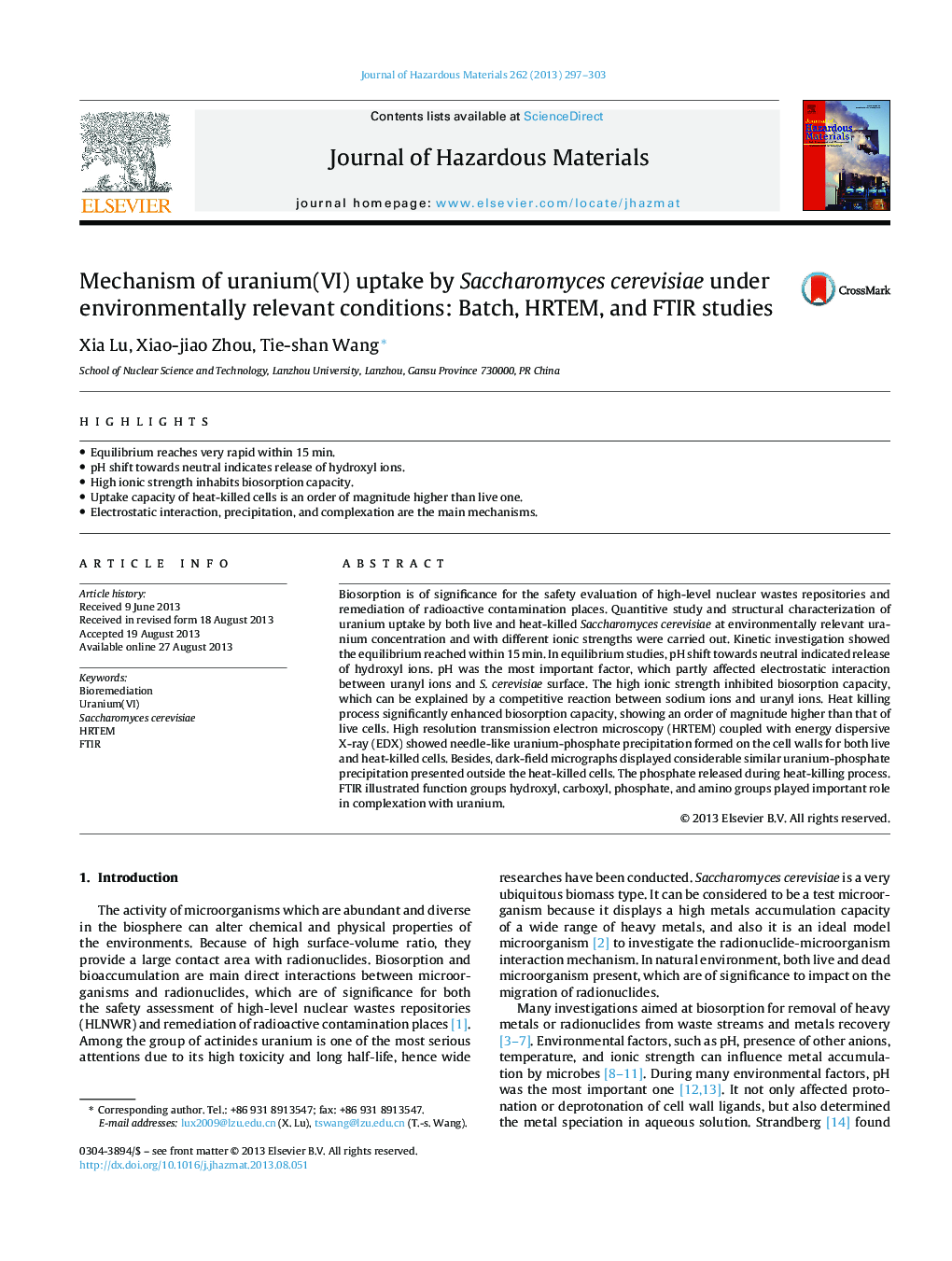| Article ID | Journal | Published Year | Pages | File Type |
|---|---|---|---|---|
| 577214 | Journal of Hazardous Materials | 2013 | 7 Pages |
Abstract
Biosorption is of significance for the safety evaluation of high-level nuclear wastes repositories and remediation of radioactive contamination places. Quantitive study and structural characterization of uranium uptake by both live and heat-killed Saccharomyces cerevisiae at environmentally relevant uranium concentration and with different ionic strengths were carried out. Kinetic investigation showed the equilibrium reached within 15Â min. In equilibrium studies, pH shift towards neutral indicated release of hydroxyl ions. pH was the most important factor, which partly affected electrostatic interaction between uranyl ions and S. cerevisiae surface. The high ionic strength inhibited biosorption capacity, which can be explained by a competitive reaction between sodium ions and uranyl ions. Heat killing process significantly enhanced biosorption capacity, showing an order of magnitude higher than that of live cells. High resolution transmission electron microscopy (HRTEM) coupled with energy dispersive X-ray (EDX) showed needle-like uranium-phosphate precipitation formed on the cell walls for both live and heat-killed cells. Besides, dark-field micrographs displayed considerable similar uranium-phosphate precipitation presented outside the heat-killed cells. The phosphate released during heat-killing process. FTIR illustrated function groups hydroxyl, carboxyl, phosphate, and amino groups played important role in complexation with uranium.
Related Topics
Physical Sciences and Engineering
Chemical Engineering
Chemical Health and Safety
Authors
Xia Lu, Xiao-jiao Zhou, Tie-shan Wang,
